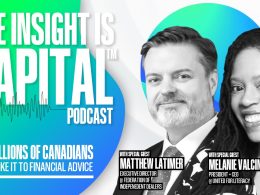by Liz Ann Sonders, Chief Investment Strategist, Kevin Gordon, Charles Schwab & Company Ltd.
Certain segments of the economy and stock market have experienced much stronger recoveries this year, underscoring a severe bifurcation between the "haves" and "have nots."
Before getting to the outlook for the second half, let's assess how the first half unfolded relative to our expectations heading into this year. Although the economy has weakened less than we expected and market leadership has remained narrower than we expected, we did correctly anticipate:
- Multiple cross-currents in term of economic data and inflation
- "Rolling" pattern of strength and weakness among segments of the economy
- Some cracks forming in the labor market and consumer spending
- Continued disinflation, but not in a straight line
- Moving target in terms of Federal Reserve policy expectations
- Gradual move up in the unemployment rate
- Heightened focus on the budget deficit and government debt
- Inverse relationship between Treasury bond yields and stocks persisting
- Quality-oriented factors continuing to define leadership
- Magnificent 7 not dominating performance as much in 2024
- Lens of Artificial Intelligence (AI) widening from "creators" to "adopters"
This point in the cycle is being brought to you by the letter K
In conjunction with the "rolling" nature of this cycle, there are an increasing number of clear bifurcations or "splits" having developed. The graphic below is one we resurrected from the early part of the pandemic, where there were clear divergences that had formed differentiating the "haves" from the "have nots." The graphic provides a snapshot, where the commentary below it dives into more detail on each divergence, as well as our outlook for the rest of the year.

©2024 Charles Schwab & Co., Inc. All rights reserved.
Member SIPC. DPI=disposable personal income. ISM=Institute for Supply Management. ST=SentimenTrader. Fab 4 represents Amazon, Meta, Microsoft and NVIDIA. Nominal value is the current value, without taking inflation or other market factors into account and real value is the nominal value after it has been adjusted for inflation.
At your service
The chart below tracks both the ISM Manufacturing and ISM Non-Manufacturing (Services) indexes. They are diffusion indexes, meaning readings below 50 indicate contraction and readings above 50 indicate expansion. After clear decelerations in both services and manufacturing over the past couple of years, services have reaccelerated. There was hope around the turn-up in manufacturing; but the recent move back into expansion was short-lived. Looking ahead, we expect choppier patterns for both services and manufacturing—with any coming weakness in the labor market showing up more on the services side than on the manufacturing side.
Services' reacceleration

Source: Charles Schwab, Bloomberg, ISM (Institute for Supply Management), as of 5/31/2024.
Establishment's dominance
When the monthly labor market report is released by the Bureau of Labor Statistics (BLS), the two headlines that cross the wires first are the payroll change and the unemployment rate. What many don't realize is that those indicators come from different surveys. Payrolls are derived from the BLS establishment survey (of companies' payrolls), while the unemployment rate is derived from the BLS household survey (of household members).
Particularly pronounced in this cycle has been the widening spread between the two surveys, as shown below, with continued strong payrolls alongside much weaker employment at the household level. Over the past two years, the establishment survey suggests 6.9 million jobs have been created; while the household survey suggests it's less than half of that, at 3.2 million. For what it's worth, the household survey tends to be more accurate at important turning points in the cycle (in both directions). The household survey also dissects the types of jobs being created, with the latest data showing a record year-to-date plunge in full-time jobs. The contraction in full-time employment is in definitive recession territory based on history. Looking ahead, we expect that there will continue to be notable divergences between the two surveys; but that with upcoming "benchmark revisions" associated with the Quarterly Census of Wages and Employment (QCEW) some "catching down" by payrolls relative to household employment will unfold.
Household survey telling more accurate story?

Source: Charles Schwab, Bloomberg, Bureau of Labor Statistics, as of 5/31/2024.
Data indexed to 100 (base value = 12/31/2019). An index number is a figure reflecting price or quantity compared with a base value. The base value always has an index number of 100. The index number is then expressed as 100 times the ratio to the base value.
Strong domestic growth widens imports/exports spread
Stronger economic growth in the United States relative to much of the rest of the world is witnessed when separating out trade from gross domestic product (GDP). Shown below are consensus estimates for imports and exports, with the former continuing to surge alongside a faltering path for exports. As noted in our colleague Jeff Kleintop's international outlook, improving global growth would likely support a convergence in these trends looking ahead.
Weaker global growth = weaker exports

Source: Charles Schwab, Bloomberg as of 6/7/2024.
Forecasts contained herein are for illustrative purposes only, may be based upon proprietary research and are developed through analysis of historical public data.
The all-important consumer and the real deal on incomes
As analysts of the economy and markets, we often tend to be in the weeds of data. Per inflation, although there is heightened focus on headline vs. core inflation, rates of change for both month/month and year/year readings, base effects, etc.; the typical consumer is focused on levels. Consumer confidence has been dented by the simple fact that prices remain significantly higher than they were pre-pandemic.
The dour perspective about inflation is clearly seen in the yawning spread between nominal and real disposable personal income, shown below. Whereas nominal incomes are approaching all-time highs, that's nowhere near the case for real incomes. Assuming more progress is made on the inflation front, we expect there would be some catch up by real incomes to nominal.
Real incomes depressed relative to nominal

Source: Charles Schwab, Bloomberg, as of 4/30/2024.
Blow to low incomes
As noted above, consumer confidence has been dented by the high cost of living; clearly more pronounced down the income spectrum, as shown below. In terms of the path forward for these cohorts, inflation is likely to be the primary needle-mover for the trajectory of lower income confidence, while job security may hold the key to the trajectory of higher income confidence.
Less optimism down income spectrum

Source: Charles Schwab, Bloomberg, The Conference Board, as of 5/31/2024.
What you need, not what you want
Additive to the more acute pain being felt down the income spectrum is the rub of where inflation has been stickiest. Most of the common breakdowns of inflation statistics are along headline vs. core readings (overall vs. ex-food/energy). However, a more relevant breakdown in this cycle might be discretionary vs. non-discretionary components of inflation metrics. Piper Sandler recently separated the consumer price index (CPI) into discretionary (wants) and non-discretionary (needs) cohorts.
As shown below, over the past two years, there has been a plunge in inflation of discretionary items (to near-deflation territory); while the inflation rate in non-discretionary categories (like health care, shelter, insurance, etc.) has accelerated sharply to more than 6% year-over-year. Looking ahead, we expect the shelter categories to start trending lower, while categories like insurance may stay elevated. In terms of the discretionary categories, we don't expect an acceleration and could witness a move into deflation territory, especially given the burgeoning announcement of price cuts by many retailers and food/beverage chains.
Prices of needs > prices of wants

Source: Charles Schwab, Piper Sandler & Co. (PSC), as of 4/30/2024.
CPI indexes created by PSC. Core Non-Discretionary categories: Medial Care Commodities, Rent, Hospital Services, Motor Vehicle Maintenance, Motor Vehicle insurance, Motor Vehicle Fees, Day Care and Preschool, Wireless Telephone Services, Internet Services, Personal Care Products, Legal Services, Funeral Expenses, Haircuts & Other Personal Care Services, Financial Services, Pet Services including Veterinary.
Brand awareness
One of the ways the scourge of inflation has manifested itself is in changing consumer behavior. A recent NielsenIQ study, shown below, found a significant increase in spending on store brands relative to a shrinking share of spending devoted to national brands, especially for general merchandise. We expect this newfound era of frugality to have legs throughout the remainder of this year, other than under an "immaculate disinflation" scenario of a healthy labor market alongside accelerating disinflation.
Trading down in terms of brands

Source: NIQ (NielsenIQ), Wall Street Journal, 52 weeks ending 5/4/2024.
Chart represents percentage change in national brand and store brand unit sales from a year earlier.
Less about short-term Fed policy expectations…
As we discussed at length in our full-year 2024 outlook, we continue to believe that expectations around Fed policy in the second half will be volatile and tied to every release of economic and inflation data point. That said, there has been an interesting development that unfolded at the start of this year; one that we believe is likely to persist throughout the rest of this year.
There was a close and unidirectional relationship between moves in the S&P 500 and the implied fed funds target rate (FFTR) in the second half of 2023, as shown below (with the FFTR line inverted). Between July and October of last year, the expectation for the year-end 2024 FFTR surged from less than 4% to about 4.8%, corresponding to a correction in stocks over that same period. Between late October of 2023 and early January of 2024, the expectation for the year-end 2024 FFTR plunged from 4.8% to nearly 3.6%, corresponding to a wicked rally in stocks. Since then, stocks have continued to stage a remarkable run, even though expectations for the year-end 2024 FFTR have moved up to nearly 5%. We think it's increasingly been moves in longer-term Treasury yields that have driven stocks higher vs. expectations around near-term Fed policy, and we expect that to persist throughout the remainder of this year.
Fed expectations less a driver of stocks

Source: Charles Schwab, Bloomberg, as of 6/7/2024.
Futures, and Futures options trading involves substantial risk and is not suitable for all investors. Please read the Risk Disclosure Statement for Futures and Options prior to trading futures products. Indexes are unmanaged, do not incur management fees, costs and expenses and cannot be invested in directly. Past performance does not guarantee future results.
…More about longer-term yields
Throughout many of our commentaries for the past couple of years we have highlighted the likely end of the so-called Great Moderation era that spanned from the late 1990s to the early stages of the pandemic. It was marked by persistent disinflation and a generally positive correlation between bond yields and stock prices, as shown below (in green). We now appear to be in an inverse relationship era that is starting to mirror the start to what we've been terming the "Temperamental Era" from the mid-1960s to the mid-1990s. That was an era marked by greater inflation volatility and a generally negative correlation between bond yields and stock prices. At least for the remainder of this year, we expect this correlation to remain negative. More persistence in this relationship beyond this year would, in our view, be a confirming sign that a new era is upon us.
A new era dawning?

Source: Charles Schwab, Bloomberg, as of 6/7/2024.
Correlation is a statistical measure of how two investments have historically moved in relation to each other, and ranges from -1 to +1. A correlation of 1 indicates a perfect positive correlation, while a correlation of -1 indicates a perfect negative correlation. A correlation of zero means the assets are not correlated. Indexes are unmanaged, do not incur management fees, costs and expenses and cannot be invested in directly. Past performance does not guarantee future results.
Bigger better
Since the bull market began back in October 2022, a glaring feature has been the dominance of large caps (proxied by the S&P 500) and the lack of meaningful upside for small caps (proxied by the Russell 2000). As shown below, the K-shaped recovery has been much kinder to the former, given it has outpaced the latter by nearly 30% over the past 18 months. It's highly unusual to see small caps lagging in the earlier stages of a bull market, but as we've been emphasizing, this is not a normal cycle.
Large caps still dominate

Source: Charles Schwab, Bloomberg, as of 6/7/2024.
Data indexed to 100 (base value = 10/12/2022). An index number is a figure reflecting price or quantity compared with a base value. The base value always has an index number of 100. The index number is then expressed as 100 times the ratio to the base value. Indexes are unmanaged, do not incur management fees, costs and expenses and cannot be invested in directly. Past performance does not guarantee future results.
We think the fact that higher rates are putting more pressure on small companies' profitability is driving the performance gap; and since almost 40% of the Russell 2000 consists of companies with no earnings, it makes sense as to why forward earnings estimates are trending lower for the index (vs. higher for the S&P 500).
Not only that, but for larger companies that termed out their debt before rates spiked, the Fed's rate hiking campaign has essentially been harmless—evidenced by the near-two decade low in corporate net interest payments, as shown below. Our sense is that this small- vs. large-cap performance gap doesn't meaningfully close until rate volatility subsides meaningfully and/or the Fed starts easing.
Lower net interest payments a shield

Source: Charles Schwab, Federal Reserve Bank of St. Louis, as of 3/31/2024.
On balance (sheets)
Even within large caps, there are some K-shaped trends. Shown below is the performance for two cohorts of stocks in the S&P 500 (tracked by Goldman Sachs) since the Fed stopped hiking rates last July. The strong balance sheet group (consisting of companies with high profitability and low leverage, etc.) has outpaced the weak balance sheet group by more than 13%. In other words, lower-quality large caps have barely treaded water over the past year; and we don't expect this gap to close until companies with weaker profiles are able to adjust to higher rates and/or experience a stronger rebound in earnings growth.
The strong get stronger

Source: Charles Schwab, Bloomberg, as of 6/7/2024.
Data indexed to 100 (base value = 7/26/2023). The GS strong and weak balance sheet baskets each contain 50 S&P 500 companies across eight sectors with strong and weak balance sheets, respectively. An index number is a figure reflecting price or quantity compared with a base value. The base value always has an index number of 100. The index number is then expressed as 100 times the ratio to the base value. Indexes are unmanaged, do not incur management fees, costs and expenses and cannot be invested in directly. Past performance does not guarantee future results.
There is also a growing split recovery at the large-cap sector level. Shown below is the "growth trio" of sectors—which make up more than half of the S&P 500 (by market cap) and house the Magnificent 7 (Mag7), with performance indexed to the start of 2023. About a year ago, Consumer Discretionary (CD) started to lag behind Communication Services (CS) and Information Technology (Tech). Since the beginning of last year, CD is up a respectable 40%, but CS and Tech are up more than 80%. Importantly, CD is one of only two sectors we have rated as "underperform" (the other is Real Estate). Schwab's outperform ratings continue to be Financials, Materials and Energy. For more detail, see Monthly Stock Sector Outlook (2024) | Charles Schwab.
From growth trio to growth duo

Source: Charles Schwab, Bloomberg, as of 6/7/2024.
Data indexed to 100 (base value = 1/2/2023). An index number is a figure reflecting price or quantity compared with a base value. The base value always has an index number of 100. The index number is then expressed as 100 times the ratio to the base value. Indexes are unmanaged, do not incur management fees, costs and expenses and cannot be invested in directly. Past performance does not guarantee future results.
It's hard to see the gap above closing in favor of CD if one of its largest members—Tesla—continues to struggle. Evidenced by the performance data in the table below, it's difficult to include the stock in the Mag7 group, simply because of its horrible performance this year. As most investors know, we don't cover individual stocks when it comes to recommendations, but the lack of consistency in Mag7 members' performance and earnings data is worth noting, especially because in addition to Tesla, Apple is underperforming the S&P 500 this year.

Source: Charles Schwab, Bloomberg, as of 6/7/2024.
S&P 500 ranking based on performance within the S&P 500. All corporate names and market data shown above are for illustrative purposes only and are not a recommendation, offer to sell, or a solicitation of an offer to buy any security. Indexes are unmanaged, do not incur management fees, costs, and expenses, and cannot be invested in directly. Supporting documentation for any claims or statistical information is available upon request. Past performance is no guarantee of future results.
Time to retire the Mag7?
Based on the aforementioned performance (or lack thereof), it's understandable as to why the Mag7 moniker should probably be retired. As such, enter the Fab 4, which includes the best performers (in terms of price and earnings) among the Mag7 this year, shown in the chart below. Also shown is the S&P 500 excluding the Fab 4, which is up just 6.6% year-to-date.
Having an outlook for how/whether this split eases requires an outlook on individual companies—NVIDIA in particular, given the stock's return of more than 140% this year. Again, since we don't cover individual stocks, we'll just note that momentum is a powerful force when it comes to some of these mega-cap names.
NVIDIA's surge has brought with it many comparisons to the tech bubble in the late 1990s; and while hype around AI is similar, every bubble/mania is different. Worth noting, though, is that even for the largest companies in the late 1990s that saw their share prices plunge when the bubble burst, it wasn't because their earnings growth went outright negative; they just couldn't continue to meet aggressive expectations. Perhaps that can serve as food for thought given NVIDIA's forward earnings estimates are up by 253% year-over-year.
Magnificent 7 rebranded to Fab 4

Source: Charles Schwab, Bloomberg, as of 6/7/2024.
Data indexed to 100 (base value=1/2/2024). Fab 4 represents Amazon, Meta, Microsoft and NVIDIA. All corporate names and market data shown above are for illustrative purposes only and are not a recommendation, offer to sell, or a solicitation of an offer to buy any security. Supporting documentation for any claims or statistical information is available upon request. An index number is a figure reflecting price or quantity compared with a base value. The base value always has an index number of 100. The index number is then expressed as 100 times the ratio to the base value. Indexes are unmanaged, do not incur management fees, costs and expenses and cannot be invested in directly. Past performance does not guarantee future results.
Right now, the Fab 4's earnings growth is significantly outpacing the rest of the market. As shown below, the former posted a year-over-year earnings growth rate of nearly 50% in the first quarter compared to less than 5% for the other 496 members. Fortunately, estimates from LSEG (London Stock Exchange Group) I/B/E/S show that the gap is expected to narrow throughout the year; and by 2025, although growth for the Fab 4 is expected to be greater, the spread won't be as glaring. Assuming earnings can continue to grow for the S&P 500 ex-Fab 4, we think that will continue to support the market throughout the year.
Healthy convergence upon us

Source: Charles Schwab, LSEG I/B/E/S, as of 5/31/2024.
Fab 4 represents Amazon, Meta, Microsoft and NVIDIA. Forecasts contained herein are for illustrative purposes only, may be based upon proprietary research and are developed through analysis of historical public data. Indexes are unmanaged, do not incur management fees, costs and expenses and cannot be invested in directly. Past performance does not guarantee future results.
Even though the Fab 4's exceptional performance this year accounts for a significant portion of the S&P 500's gain, there are signs that members of the group matter less to the broader market's day-to-day moves. Looking at just NVIDIA, for example, the rolling 30-day correlation between changes in the company's stock price and the S&P 500 has fallen significantly over the past year—from a high of more than 0.9 (nearly perfect) to now slightly more than 0.3. That doesn't mean the company's contribution to the index isn't significant; it just means that it isn't moving as much with the index on a day-to-day basis.
Not in lockstep anymore

Source: Charles Schwab, Bloomberg, as of 6/7/2024.
Correlation is a statistical measure of how two investments have historically moved in relation to each other, and ranges from -1 to +1. A correlation of 1 indicates a perfect positive correlation, while a correlation of -1 indicates a perfect negative correlation. A correlation of zero means the assets are not correlated. All corporate names and market data shown above are for illustrative purposes only and are not a recommendation, offer to sell, or a solicitation of an offer to buy any security. Supporting documentation for any claims or statistical information is available upon request. Indexes are unmanaged, do not incur management fees, costs and expenses and cannot be invested in directly. Past performance is no guarantee of future results.
Some potholes worth watching
When it comes to stocks, a bifurcation we have been writing about this year has been one of resilience at the headline (or index) level compared to tons of churn and weakness at the individual member level. One way to see that is in the chart below, which shows the spread between the VIX Index and Cboe S&P 500 Dispersion Index. The former is a measure of the market's expected volatility (it tends to spike during corrections and bear markets) while the latter is a measure of the market's expectation for how wide the gap is between the best and worst performers.
As shown, dispersion has been on the rise this year as the VIX remains quite low. This means that investors have largely enjoyed a calm environment at the index level, but have had to do more digging at the member level to find outperformance (higher dispersion means a larger spread between winning and losing stocks).
Low vol, rising dispersion

Source: Charles Schwab, Bloomberg, as of 6/7/2024.
The Chicago Board Options Exchange (Cboe) S&P 500 Dispersion Index (DSPX℠) measures the expected dispersion in the S&P 500® over the next 30 calendar days, as calculated from the prices of S&P 500 index options and the prices of single stock options of selected S&P 500 constituents, using a modified version of the VIX® methodology. Indexes are unmanaged, do not incur management fees, costs and expenses and cannot be invested in directly. Past performance is no guarantee of future results.
Another way to see the bifurcation is via the table below, which is a portion of the larger table that goes out on Liz Ann's X feed every day. The middle column shows the maximum drawdowns for each index this year. As shown, none have made it to correction territory (defined as a 10% decline), although the Russell 2000 is quite close. Yet, the real story is told in the next column over, which shows the average maximum drawdown at the member level. Using that metric, the S&P 500 has already reached correction territory (at -15%), while the Russell 2000 and Nasdaq have surpassed bear market territory (at -28% and -37%, respectively).

Source: Charles Schwab, Bloomberg, as of 6/7/2024.
Some members excluded from year-to-date return columns given additions to indices were after January 2024. Indexes are unmanaged, do not incur management fees, costs and expenses and cannot be invested in directly. Past performance is no guarantee of future results.
We do see potential for some more "catch-down" for the indexes if underlying market breadth deteriorates and sentiment continues to get increasingly frothy. As we are penning this report, 69% of the S&P 500's members are in an uptrend, which is quite healthy; but that figure is a much lower 51% for the Russell 2000 and 43% for the Nasdaq. A continued divergence where the indexes move higher (courtesy of strength from the mega caps) but the majority of members fall would be negative and likely met with a correction (or worse) down the line.
Much of that also hinges on whether investor sentiment becomes excessively optimistic again. Shown below are SentimenTrader's "Dumb Money" and "Smart Money" Confidence Indexes (the former is generally not good at market timing and is often on the wrong side of market moves). The spread is not at an extreme given Dumb Money Confidence is off the highs. Yet, it remains elevated, so any reversal higher—driven perhaps by AI hype—would add some contrarian vulnerability if faced with a negative catalyst.
Sentiment skews optimistic

Source: Charles Schwab, SentimenTrader, as of 6/7/2024.
SentimenTrader's Smart Money Confidence and Dumb Money Confidence Indexes are used to see what the "good" market timers are doing with their money compared to what the "bad" market timers are doing and are presented on a scale of 0% to 100%. When the Smart Money Confidence Index is at 100%, it means that those most correct on market direction are 100% confident of a rising market. When it is at 0%, it means good market timers are 0% confident in a rally. The Dumb Money Confidence Index works in the opposite manner.
In sum
The roll-through of strength and weakness within the economy (and stock market) continues; but the backdrop is increasingly characterized by distinctive bifurcations; harkening back to the early pandemic "K" shaped environment. We believe in the disinflation story, but a slow slog with bouts of volatility, leading to jumpy expectations around Fed policy. Absent a swift move down in core inflation (unlikely), the green light for the Fed to begin easing policy likely rests with the labor market (so far only showing minor cracks).
In terms of the stock market, a benign Treasury yield backdrop should be supportive of the stock market; but a sharper move either higher (driven by an inflation reacceleration) or lower (driven by much weaker economic growth) would likely lead to weaker performance and/or higher volatility. In other words, a "goldilocks" scenario would continue to be supportive, but the likelihood of that persisting is diminishing. Concentration risk reigns supreme among the cap-weighted indexes, with underlying churn and weakness likely to persist. But that underlying weakness also tends to provide opportunity, with a continued emphasis on quality.
Copyright © Charles Schwab & Company Ltd.













